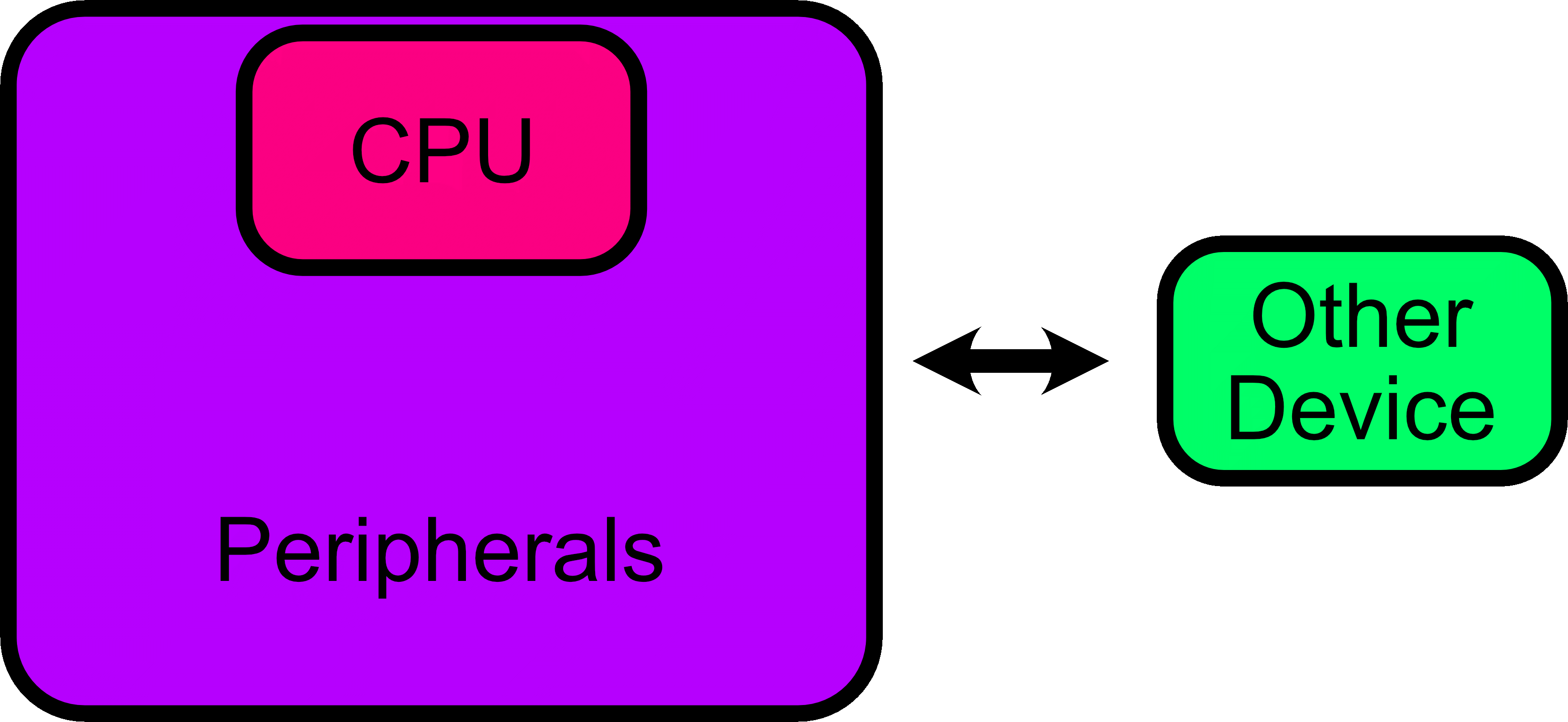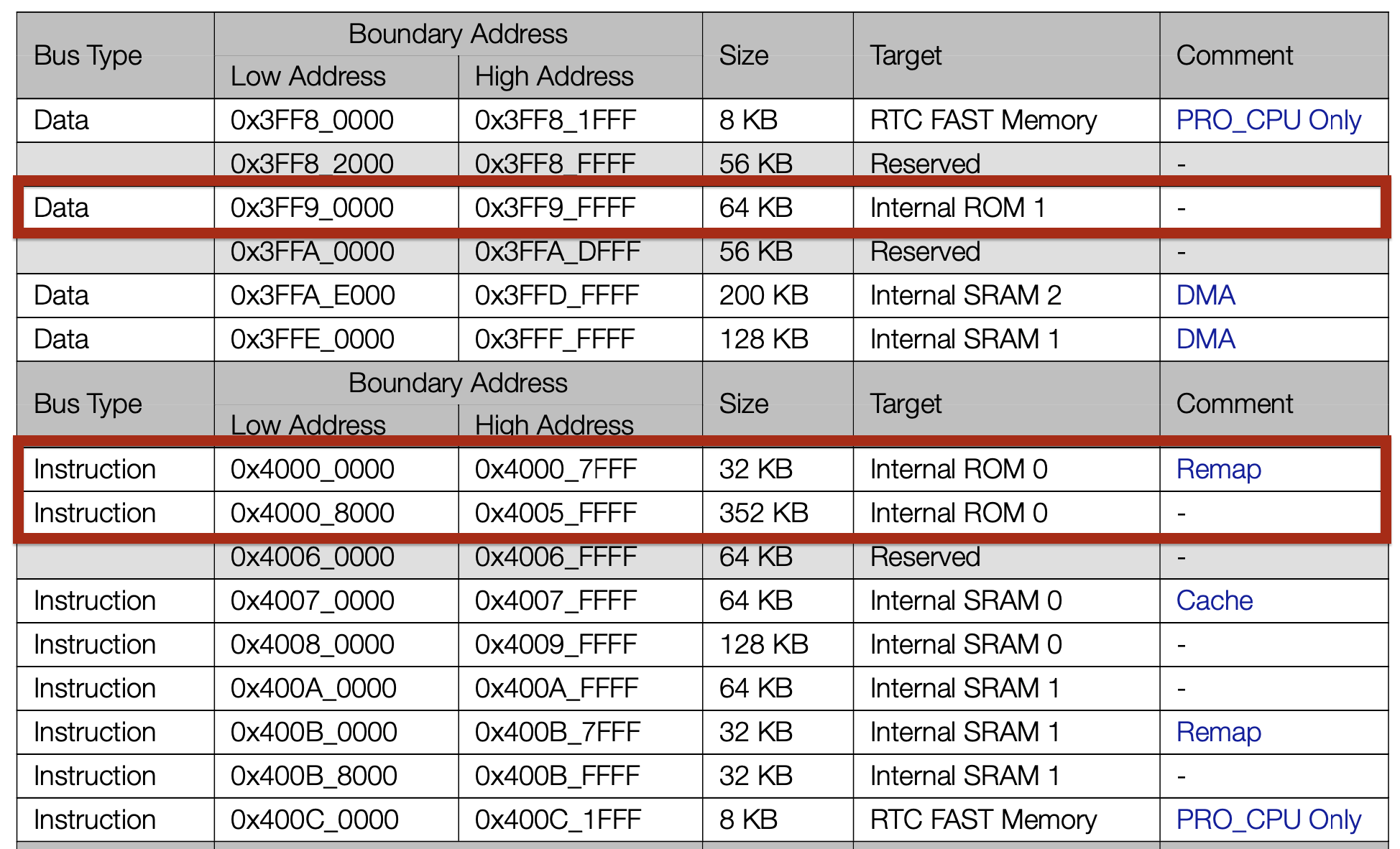Emulating the Badge Under Renode
(Eventually)
Sean "xobs" Cross
About Me

Talk Outline
- What is Renode?
- How is it extensible?
- What is the state of the badge?
What is Renode?

Renode is an Emulator
- Windows
- Mac
- Linux
- CI
- Github Actions
Generic Whole-system Emulator
- CPU cores
- Peripherals
- Interconnections
Whole-system Emulator

CPU Cores
- x86
- arm
- arm64
- ppc
- riscv
- sparc
- xtensa
Peripherals

Memory is Just a Peripheral
- When you write to memory, it remembers the data
- When you read from memory, you get the value
- Your program is just initialised memory
Peripherals Are Just Special Memory
- Writing to a memory address does a thing
- Reading from an address gets a result
- Interrupts are just GPIOs
Peripherals Are Just Special Memory

10% Functionality Solves 90% of Usecases

Existing Peripherals in Renode
- Built-in peripherals for a number of devices
- STM32
- NRF52
- IMXRT
- LiteX
- See https://github.com/renode/renode-infrastructure/tree/master/src/Emulator/Peripherals/Peripherals for more
Creating New Peripherals
- Renode is written in C#
- Like Java, C# has an
eval()function - Peripherals can be written and loaded at runtime
Networks in Renode
- Built-in support for CAN, Ethernet, and Wireless
- Also possible to add networks at runtime
- No latency, just packets of data
- Different devices run at different speeds
Other Goodies
- Video output with touchscreen support
- Python interpreter for quick hacks
- Networked serial port
- GDB server for each core
- Function call logging
- Robot framework scripting
Shortcomings
- Unable to unload modules
- Need to restart Renode when you change a file
- No real audio support
- Support for verifying I2S, but can't play it
- Only x64 hosts
- Runs under Rosetta on Mac
- Documentation needs work
- Use the source!
Extending Renode
First, Betrusted
- FPGA with VexRiscv
- 2nd FPGA with smaller VexRiscv
- 16-bit COM bus between them
- AES extensions
- x25519 "ENGINE" accelerator
- SHA accelerator
- Battery charger and manager
- Custom lcd, timers, and USB
Betrusted

Emulating it With Renode
- Can develop the OS!
- Good enough to catch hardware bugs
Getting Hardware to Users

Getting Hardware to Users

Demonstration!
Getting Started with Renode
- Renode Platform Definition (
.repl) - Renode Script (
.resc)
Example project repl:
using "platforms/cpus/nrf52840.repl"
gpio0: // PinName in ArduinoIDE
24 -> led_red@0 // LED_RED
16 -> led_green@0 // LED_GREEN
6 -> led_blue@0 // LED_BLUE
camera: Sensors.ArduCAMMini2MPPlus @ {
spi2;
twi0 0x30
}
lsm9ds1_imu: Sensors.LSM9DS1_IMU @ twi0 0x6b
lsm9ds1_mag: Sensors.LSM9DS1_Magnetic @ twi0 0x1e
Example project resc
using sysbus
mach create
machine LoadPlatformDescription @platforms/cpus/stm32f103.repl
machine LoadPlatformDescriptionFromString \
"button: Miscellaneous.Button @ gpioPortC 13 { IRQ -> gpioPortC@13 }"
showAnalyzer usart2
macro reset
"""
sysbus LoadELF @zephyr-stm32f103-button.elf
"""
runMacro $resetRunning it
mono64 Renode.exe project.rescHow to Extend Renode
- Find a peripheral that does what you want
- You might even find a compatible peripheral!
- Copy it to your project
- Change the constructor
- Change the register set
- Import the
.csfile into Renode - Add it to your platform file
Running Badge Software in Renode
It Doesn't
Xtensa is an Uncommon Architecture
- Audio DSPs
- Possibly Intel?
- NXP
Extensive use of Boot ROM

Extensive use of Boot ROM
$ esptool.py dump_mem \
0x3ff90000 \
65536 \
irom.binAdd a serial port
namespace Antmicro.Renode.Peripherals.UART {
public class ESP32_UART : UARTBase, IDoubleWordPeripheral,
IKnownSize {
private readonly DoubleWordRegisterCollection registers;
public ESP32_UART(Machine machine) : base(machine) {
registers = new DoubleWordRegisterCollection(this,
new Dictionary<long, DoubleWordRegister> {
{0x00, new DoubleWordRegister(this).WithValueField(0,8,
writeCallback: (_, v) => TransmitCharacter((byte)v))}
});
}Add a serial port
{0x00, new DoubleWordRegister(this)
.WithValueField(0, 8,
writeCallback: (_, v) => TransmitCharacter((byte)v))}Add a platform file
cpu1: CPU.Xtensa @ sysbus
cpuId: 1
cpuType: "esp32s3"
dram: Memory.MappedMemory @ sysbus 0x3FC88000
size: 0x78000
irom: Memory.MappedMemory @ sysbus 0x3FF00000
size: 0x20000
drom: Memory.MappedMemory @ sysbus 0x40000000
size: 0x60000
iram: Memory.MappedMemory @ sysbus 0x40370000
size: 0x70000
uart0: UART.ESP32_UART @ sysbus 0x60000000

SVD Files Are Your Friend

Load SVD file
sysbus:
init:
ApplySVD @esp32s3.svdLoad SVD file
sysbus: Read from an unimplemented register SYSTEM:SYSCLK_CONF
(0x600C0060), returning a value from SVD: 0x1. (3)
sysbus: Read from an unimplemented register SYSTEM:PERIP_CLK_EN0
(0x600C0018), returning a value from SVD: 0xF9C1E06F.
sysbus: Write of value 0xF9C1E06F to an unimplemented register
SYSTEM:PERIP_CLK_EN0 (0x600C0018) generated from SVD.
sysbus: Read from an unimplemented register SYSTEM:PERIP_RST_EN0
(0x600C0020), returning a value from SVD: 0x0.
sysbus: Write of value 0x0 to an unimplemented register SYSTEM:PERIP_RST_EN0
0x600C0020) generated from SVD.
sysbus: Read from an unimplemented register SYSTEM:PERIP_RST_EN0
(0x600C0020), returning a value from SVD: 0x0.
sysbus: Write of value 0x4 to an unimplemented register SYSTEM:PERIP_RST_EN0 (0x600C0020) generated from SVD.
Add Peripherals
Slowly Advance

GDB with ELF

What's Left?
- SPI Controller
- Interrupt Controller
- I2C Controller
- Touch Controller
- Display
Displays
- Implement
ISpiDevice - Subclass AutoRepaintingVideo
- Implement
Repaint()
Touch Controller
- Possibly interact with the Display controller
- Implement
II2CPeripheral
Audio is Hard
- Existing I2S peripherals just pattern-match audio
Getting involved
- Try Renode for your projects!
- Add CI tests for your firmware!
- Explore binaries for unknown targets!